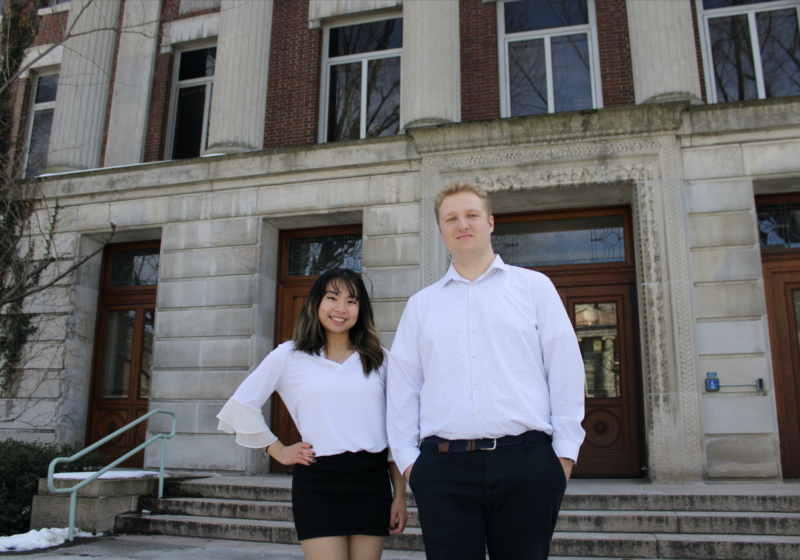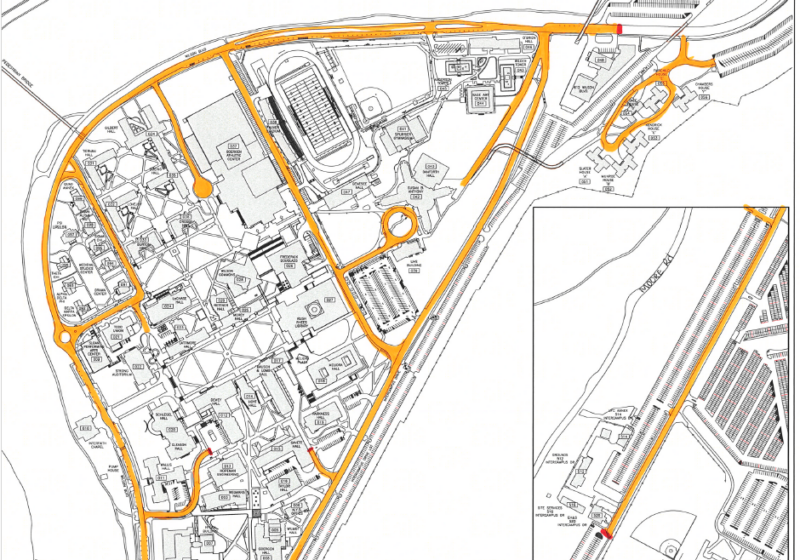Leave it to a fun-loving Nashville transplant to show us that there’s more to a double bass solo than the occasional bluegrass oompah.
On Saturday evening, the famed Edgar Meyer, along with the Rochester Philharmonic Orchestra, presented an offering of virtuoso bass music, and he did it all by steadfastly remaining his own man, so to speak. In fact, Meyer’s very commitment to originality is the draw for many of his enthusiasts.
“His whole objective in composition and playing is to find his voice in music, and that is what I admire about him,” junior Joel Ciaccio said.
Of course, Meyer’s first featured work, the Concerto for Double Bass in D, had to embody his persona since he composed it himself in 1993 and premiered it with Edo de Waart and the Minnesota Symphony.
More importantly, this decision to “don the hat” of the performer-composer fad of the Romantic era lends this live performance added meaning. The juxtaposition of ideas gathered over the past 10 years lent to up-to-the minute music updates on stage.
This before-and-after concept made for a thrilling performance that documented Meyer’s penchant for pyrotechnics, as well as his awareness of his own musical growth.
No slave to his own innate familiarity of this piece, the soloist spun out line after line of the jazzy concerto with an improvisatory freshness. The last two movements were distinctly Meyer, showcasing his flair for the dramatic, as well as his roots in folk music.
But even more notable were the slinky blues-like glissandos of the first movement that seemed to hatch spontaneously from the capable accompaniment of the orchestra, only to disappear in the burgeoning harmonic chatter.
Although Meyer performed his second choice, Giovanni Bottesini’s Concerto no. 2 in B Minor, with equal enthusiasm, his original-sounding divergence from this staple’s essentially operatic character amplifies the liveliness. Unfortunately, this also made for some uneasy moments ensemble-wise.
“The strings were a bit uncomfortable with some of the musical liberties that the soloist took,” RPO second violinist David Leung said. He then noted Meyer’s ability to transcend such difficulties, declaring, “he brought the orchestra to another level.”
In all, Meyer’s interpretation of the Bottesini was fluid and spotless. Both fast movements and cadenzas were played at exceedingly swift tempos that gave way to many moments of intense poeticism.
The second movement was luxuriously colorful and the third was punctuated with sparkling high notes and a touch of Meyer’s own youthful idyll.
The other two pieces of the RPO program proved a mixed bag.
Michael Hersch’s “Ashes of Memory” proved to be an interesting opener. Beginning with “quiet clusters in the strings over a pulsing timpani,” the composer’s own words, this piece was a bit of a slow starter – its long lyrical lines bordered on soporific.
However, as the piece grew in intensity, its Shostakovich-like ideas began taking on more bite and an accelerating nervous vibrancy, making the overall musical architecture much more interesting, despite the orchestra’s struggle to keep harp, strings and piano together during the epilogue.
The final work, Leonard Berstein’s “Symphonic Dances from West Side Story,” was, by far, the RPO’s most secure piece.
Drawn from the familiar musical, the orchestral suite was played with assurance and polish, though it could have used a little more spirit.
Still, it can be said that Meyer compensated for this minor deficiency, projecting a sheen of confidence over this altogether glorious performance.
Wong can be reached at lwong@campustimes.org.





